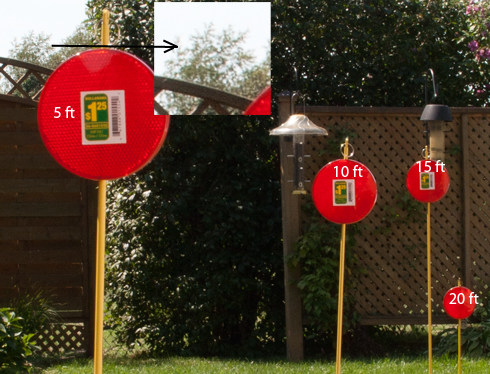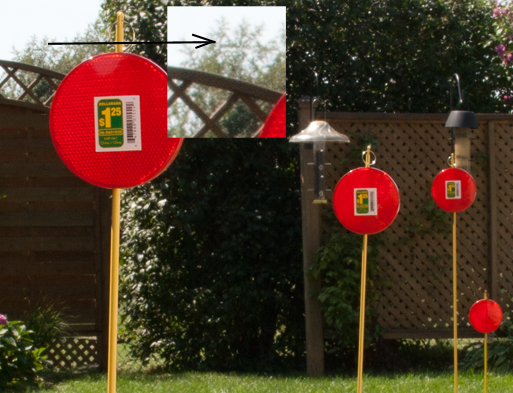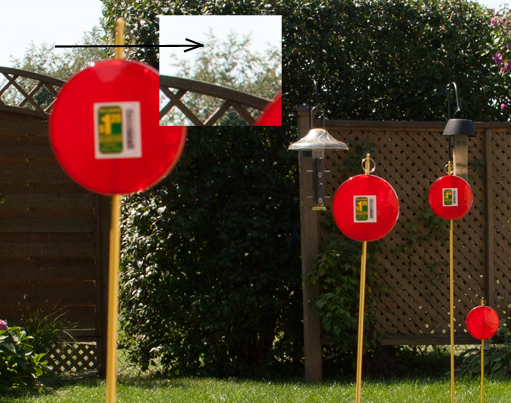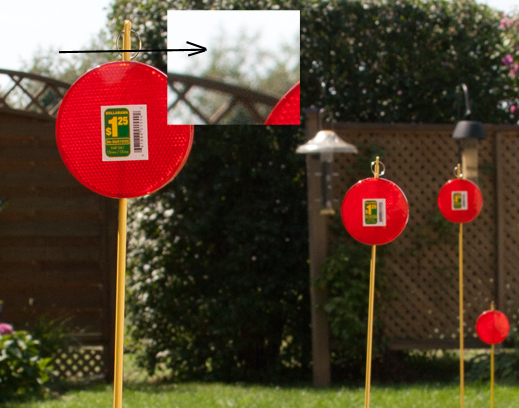Most of the time, when we want to get everything in our shot in focus from our feet out to infinity, the tendency is to dial in as high an aperture number, or f/stop, as possible. In doing so, we hope to increase the depth of field in the image, or the range from our near in-focus point to our distant in-focus point.
But there are two other parameters that have a dramatic effect on depth of field: focus point and focal length of the lens. Two rules of thumb for increasing depth of field are
· Manually focus as far away as you can from your subject while still keeping them in focus at the aperture you are using, and
· Use as short a focal length as you can to compose the shot.
Take the second point. We’ve all seen wildlife and sports shots that are taken with a very long focal length lens. The subject is very sharp while the background and foreground are very much out of focus (shallow depth of field). So, conversely, using a short focal length (or wide angle setting) results in a deeper depth of field.
Choosing the focus point, however, is probably the most critical parameter in achieving the shot you want. The first point above implies that the further away from the camera that you focus, eventually you will have everything in focus from a point close to the camera out to the horizon (infinity). To put a label on it, when this happens, you are focused at the hyperfocal distance. This term is mostly of interest to landscape photographers but the point is that, counter-intuitively, we need to focus beyondour subject to get it and the background appearing sharp.
The best graphical demonstration of this is the Online Depth of Field Calculator at www.dofmaster.com. Choose your camera model, focal length, aperture and subject distance. Assuming you focus on your subject, the calculator tells you the near focus and distant focus points. The difference between these is the depth of field.
Hyperfocal distance is also illustrated. If you focused at this distance, everything would be in focus from the distance shown in the illustration out to the horizon. Note that sometimes hyperfocal distance won’t get your subject in focus because the near focus limit is further out than your subject. In this case, you would have to use a higher f/number, shorten your focal length or resign yourself to not having the horizon in perfect focus.
The following images were shot using highly sophisticated dollar store markers at 5 foot intervals. The closest was 5 feet from the camera’s sensor. The camera was a Canon Digital Rebel using a fixed focal length of 35mm in all examples. Each image has been cropped from the originals.
In the first image, aperture was set to f/22 and focus was manually set to the calculated hyperfocal distance of 9.5 feet (just in front of the second marker). Notice that the 5 foot marker is still in focus, as well as the tree top a couple of hundred feet away (See insert). This is because the near focus limit is calculated to be 4.7 feet. (Note that the insert looks a little soft because the sensor resolution is starting to come into play.)
The second image was also at f/22, but the camera was now focused at our subject, the 5 foot marker. The calculator tells us that if we focus at 5 feet rather than the hyperfocal distance, our focus range now covers 3.3 feet to 7.2 feet. So our depth of field has now decreased from infinite to 3.9 feet just by focusing at 5 feet rather than 9.5 feet from the camera. Note that the markers at 10 feet and beyond are a little softer, and the tree top is no longer in focus (slightly softer).
At f/10, our next image was focused at the calculated hyperfocal distance of 21.1 feet (just past the lowest ‘lollipop’). The near focus limit is calculated at 10.5 feet, and indeed the second marker at 10 feet is very slightly soft. The tree top, while not perfectly sharp, is close to being in focus. I chalk this discrepancy up to difficulty in getting the focus exactly at 21.1 feet. Note that our subject at 5 feet is badly out of focus, so f/10 is clearly not a good choice if we want focus from 5 feet to the horizon.
Still at f/10 in the last image, the subject at 5 feet was once again our focus point. Calculated near and far focus limits are 4.1 feet and 6.5 feet, giving a depth of field of only 2.4 feet.
The conclusion? Decide whether you want to shoot like a landscape photographer or whether a little bit of in-focus background will suffice for your shot. Even if you don’t use hyperfocal distance, the calculator will help you choose a manual focus point beyond your subject that will keep it in focus but still give you a decent background focus.
Depth of Field: Finding the Focus Sweet Spot



